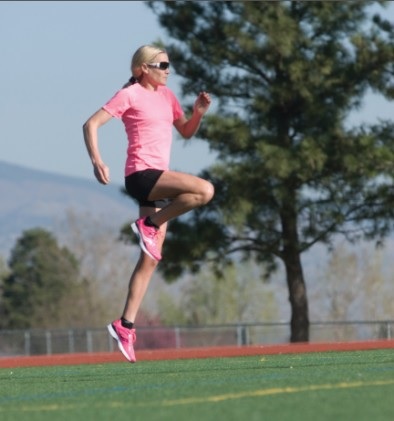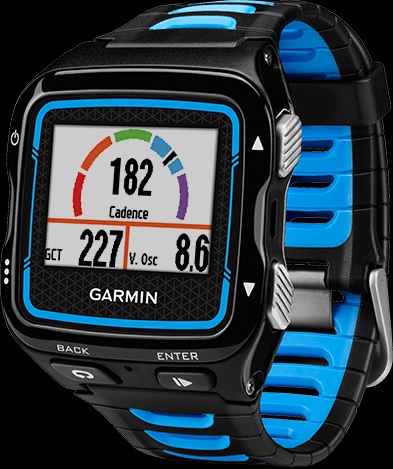Are you a 'skilled' runner? Part 2
Alan Couzens, MS (Sports Science)
Dec 31, 2014

In my last article I talked a little bit about some of the differences that I’ve seen in running economy numbers, i.e. the amount of O2 ‘fuel’ it takes to get an athlete from A to B. I briefly outlined some of the factors that contribute to these differences and suggested that, while some are relatively fixed/unchangeable, there are a group of factors related to running ‘skill’ than an athlete can significantly improve with the right type of training. In this piece, I’m going to look a little more at these factors & just what ‘the right type’ of training to improve running economy consists of. One of the categories that comes into play when we talk about factors contributing to running economy are ‘kinematic’ factors.
Kinematics is the branch of classical mechanics that describes the motion of bodies. In this case, our body.
3 aspects of the motion of our body when running have shown particular bearing on running economy…
- Cadence (Cavanaugh & Williams, 1981)
- Vertical displacement (Gregor & Kirkendall, 1978)
- Ground contact time & reaction forces (Heise and Martin, 2001)
While, it’s tough to get a consistent quantitative read on the exact relationship between the above 3 factors and running economy (due to the multitude of factors that impact it, including run speed), several studies have shown a trend towards the following relationships
- Optimal cadence (for a given leg length) = higher economy.
- Lower vertical displacement of the athlete’s center of mass = higher economy
- Shorter ground contact time & less vertical component to the force application = higher economy
E.g. the following chart adapted from Nummela shows the relationship between ground contact time (in milliseconds) vs economy (in ml/kg/km^0.75) for 2 speeds (~4:45/mi and ~7:00/mi). Shorter ground contact time (more powerful application of horizontal force) = better economy!

Extending the above line of thinking, we might expect that if we improve an athlete’s ability to rapidly apply force via maximal strength or power training, we will see an improvement in running economy. Indeed, several studies have confirmed this hypothesis, e.g.
Paavolainen et al., 1999 – 3x 1hr power sessions per week over a 9 week period in the early season consisting of 20-100m sprints & 5-20 rep jumps/hops and power strength movements with low loads (<40%RM) at high velocity. --> 7% decrease in submax ground contact time, 8% improvement in submax economy. It is equally important to note that the control group who didn’t perform any power training, experienced a 4% increase in mean ground contact time & a 2% drop in submax economy.
Millet et al. 2002 – 2x Heavy Weight Training per week over a 14 week period in the early season (Blocks 3,4,5) -- (3-5x3-5 @ 90%RM – 6 leg exercises per session) --> 25% increase in 1RM squat strength --> 3% decrease in mean ground contact time per stride and a 7% improvement in submax running economy in already very well trained triathletes (VO2max=68ml/kg/min: 193ml/kg/km -> 180ml/kg/km). Again, it should also be noted that there were negative change in control group who were doing the relatively high volume endurance training without the strength work (190ml/kg/km->203ml/kg/km)
This is all well and good but how do I assess where my own ground contact time ranks and whether it is something that I can improve?
Until recently, assessment of ground contact times and vertical oscillation metrics was limited to force plates in the lab, but now some watches are offering the ability to track these metrics (e.g. the Forerunner 620 & 920XT). Shot of those metrics (from the 920XT) shown below.

This shows cadence (in strides per minute) in the top field, ground contact time (GCT) – that key economy metric that I talked about above, in the bottom left corner and vertical oscillation (in cm rise and fall of COM) in the bottom right corner.
With real time feedback from every run, athletes will now be able to assess the biomechanical aspects of a given run for fatigue indicators and will also be able to assess the impact of training interventions, such as a block of training with a maximal strength or power focus, on ground contact time (& consequent running economy).
Thanks to a very generous ‘little Santa’, I now have my hands on one of these and will be doing lots of experimenting to assess the validity of these field measures over the coming months, but they certainly show promise in providing both real time feedback to the athlete and the ability to collect large amounts of kinematic data. More to come on that front…
In the meantime, the take home message is this…
If, based on the assessments that I offered in the last article, your running economy is on the low side, there may be significant benefit to spending a block or 2 in the early season, with a focus on developing your maximal strength/power via a mix of general power/light ’plyos’, max strength and basic (run) speed workouts.
Furthermore, even if your running economy is currently ‘decent’, you are well advised to still continue a mainintenance schedule of the above type of work in your program as a focus on endurance only type training consistently results in a drop in economy over the course of the season.
Even small shifts in the amount of O2 it takes you to cover a given distance amount to large differences in performance when extended over long distances such as the Ironman marathon.
Train smart,
AC
Tweet**************************
Don't miss a post! Sign up for my mailing list to get notified of all new content.
**************************
